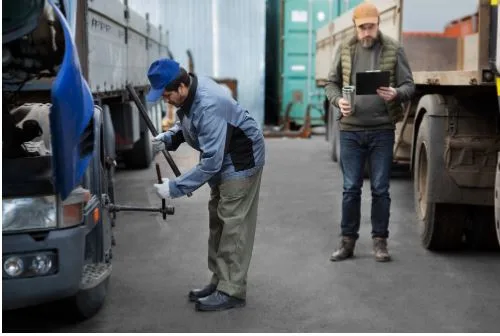What Every Contractor Should Know About Excavator Wear Parts
Excavators are among the most essential machines on a construction site. Their power, versatility, and ability to handle demanding earthmoving tasks make them indispensable for contractors. Yet even the most advanced equipment is only as reliable as its wear parts. Understanding these components, how they function, and how to maintain them can help contractors minimise downtime, reduce operating costs, and extend the life of their machines.
Why Excavator Wear Parts Matter for Long-Term Performance
Wear parts are the components most vulnerable to friction, pressure, and continuous contact with abrasive materials. Buckets, teeth, cutting edges, bushings, track chains, and hydraulic components gradually degrade with use. If ignored, these parts can compromise performance, reduce efficiency, and lead to unexpected breakdowns. For contractors managing tight deadlines, reliable wear parts are the backbone of smooth project execution. Being proactive pays off because regular inspections and timely replacements prevent expensive repairs later.
Common Excavator Wear Parts Every Contractor Should Track
An excavator’s bucket teeth and cutting edges are among the fastest-wearing components because they come into direct contact with soil, rocks, and debris. Not only do worn or dull teeth make the machine dig more slowly, but they also use more fuel. Pins and bushings are equally critical because they allow movement in the excavator’s joints. When they become worn, operators may notice looseness, unusual noise, or decreased precision. Track shoes and chains also require close attention since worn tracks affect stability, traction, and overall safety. Specialised attachments such as an auger rely on durable parts as well, especially when drilling through compacted soil or clay, making wear resistance a major performance factor.
How to Identify Early Signs of Wear
Contractors should train operators to recognise early warning signs before they turn into costly repairs. Slower digging cycles, increased vibration, and changes in machine balance often signal trouble. Inspecting bucket teeth for rounded edges or cracks can reveal the need for replacements. Listening for grinding sounds near pivot points helps detect worn pins or bushings. For tracked machines, uneven wear patterns or difficulty maneuvering may indicate alignment issues or worn track components. Monitoring hydraulic response times also helps detect premature wear in cylinders or seals. Early action boosts machine reliability and productivity.
Choosing High Quality Wear Parts for Maximum Durability
Not all wear parts are created equal. Contractors should prioritise high-grade materials and manufacturing standards when replacing components. Hardened steel teeth, reinforced bushings, and precision-engineered track components deliver better longevity and resistance to abrasion. Considering the working environment is essential too. For example, rocky terrain demands heavy-duty teeth and thicker cutting edges, while soft soils may allow lighter parts without sacrificing performance. When selecting wear parts for an auger attachment, investing in durable flighting and reinforced pilot bits ensures consistent drilling performance across varying soil types.
Maintenance Practices That Extend Wear Part Life
Routine maintenance is the most effective way to extend the lifespan of wear parts. Keeping pivot points lubricated reduces friction and slows metal fatigue. Cleaning the bucket, undercarriage, and attachment areas at the end of each workday prevents debris buildup that accelerates wear. Contractors should also schedule regular inspections based on machine hours rather than waiting for visible damage. Maintaining correct track tension is particularly important for machines operating in muddy or rocky environments because improper tension puts stress on track shoes and rollers. Storing spare wear parts on hand helps minimise downtime and keeps projects moving without delay.
Final Thoughts for Contractors Investing in Excavator Longevity
Excavator wear parts may seem like a small detail compared to the full machine, but they play a major role in overall performance. Contractors who understand how these components work, monitor them closely, and invest in quality replacements can avoid costly disruptions. With proper care, excavators operate more efficiently, consume less fuel, and deliver reliable results on every jobsite. By making wear part management a priority, contractors ensure their equipment remains a strong and dependable asset in their daily operations.


